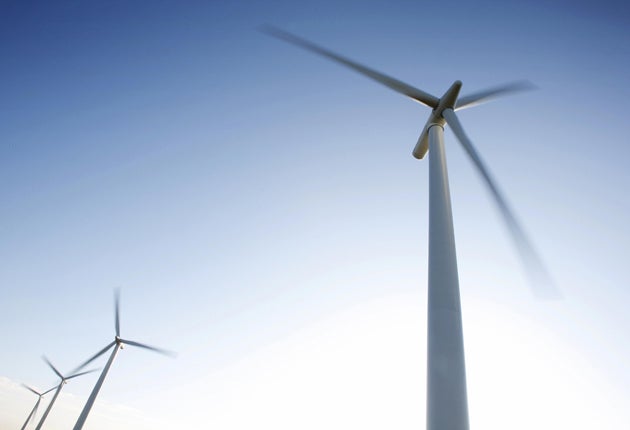Geese tagged to examine threat posed by wind farms

Your support helps us to tell the story
From reproductive rights to climate change to Big Tech, The Independent is on the ground when the story is developing. Whether it's investigating the financials of Elon Musk's pro-Trump PAC or producing our latest documentary, 'The A Word', which shines a light on the American women fighting for reproductive rights, we know how important it is to parse out the facts from the messaging.
At such a critical moment in US history, we need reporters on the ground. Your donation allows us to keep sending journalists to speak to both sides of the story.
The Independent is trusted by Americans across the entire political spectrum. And unlike many other quality news outlets, we choose not to lock Americans out of our reporting and analysis with paywalls. We believe quality journalism should be available to everyone, paid for by those who can afford it.
Your support makes all the difference.Barnacle geese heading to the Arctic for the summer were tagged with satellite trackers to find out more about their migration amid concern planned wind farms could get in their way.
The Svalbard barnacle goose, which overwinters in the Solway Firth, saw numbers plummet to just 300 by the 1940s but the population recovered to some 30,000 today.
But now experts at the Wildfowl and Wetlands Trust (WWT) are concerned planned offshore wind farms in the Firth of Forth and off the UK coast could prove an obstacle for the birds.
Dr Larry Griffin, WWT principal research officer, tagged 25 geese in the past with GPS tags and tracked their spring migrations over four years.
He said the bird's main flight corridor takes them into sites earmarked for new turbines as part of the UK's planned massive expansion in offshore wind power.
Dr Griffin is concerned the geese arrive in the area in the hours of darkness and are flying through in low light or resting on the sea for a few hours.
So he tagged five adult male geese this year at Caerlaverock Wetland Centre on the Solway Firth before they head off this month to the High Arctic Norwegian archipelago of Svalbard.
He is hoping to fill in gaps in his data to find out the altitude the birds are flying at and whether they are resting on the sea in the areas, using improved solar-powered GPS which could have enough battery to track them at night.
By tracking the birds online during their migration, he also hopes to see how they cope with existing wind farms they encounter on the Norwegian coast.
"If they are flying through there in the darkness or in sea fog conditions, my concern is there is potential of a collision," he said.
"It may well be that they spot these things easily and use them as a navigational marker, but it just concerns me a bit the time of day they are going through that area and that they have quite a narrow route."
The data gathered from the barnacle geese could be used to steer exactly where turbines under "round three" of the Crown Estate licensing process for new wind farms in UK waters are placed.
And for those farms potentially being developed in Scottish territorial waters, where the sites are more fixed, Dr Griffin suggested mitigation measures might be put in place.
These could include the arrangement of the turbines in a different way to make them less of an obstacle, or putting lights on them to make them more obvious.
But Dr Griffin said he needed the data first to see exactly what the geese were doing when they flew through those areas.
Previous tagging of whooper swans produced some data to show they flew much higher, around 150 metres above sea level rather than the usual 10 metres, in the vicinity of a wind farm - suggesting they saw the structures and took evasive action.
Join our commenting forum
Join thought-provoking conversations, follow other Independent readers and see their replies
Comments